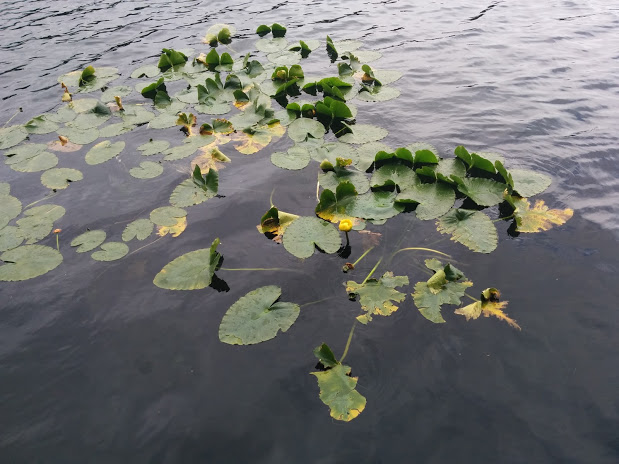When I began this blog nearly two years ago, my main goal was to write about running and otherwise being outdoors in the Anthropocene–particularly running in an age where our species has impacted all the other species of life on our planet. The deeper I get into wonderful circles of folks who do similar blogging, the more I learn about nature writing, which can be fiction or nonfiction.
I have many alerts set up in Google News, but “nature writing” is the one that comes up the most. The Guardian just had an article as well, titled “In stressed times, we can take comfort in wildlife: why nature writing is exploding.” According to The Guardian:
“It does seem to be exploding,” said Bill Lyons, executive producer of Coast and Countryfile, and a Wainwright judge. “And it’s exploded in many different directions – there’s the traditional offering, which simply shows an admirable and wonderful expertise in natural history and wildlife in its own right. Then there are writers who are delineating a particular territory. Whether that’s simply writing about marshland, or mountains, these people are plotting out particular patches of the natural world. And then there’s the latest development, which I find most interesting: we’re seeing an explosion of natural history writing as meditation, as a sort of healing process, using the landscape as a way of reflecting, often on childhood trauma, and using it as a way to heal.”
Seems to me also, and I would include my blogging as an example, nature writers may have no event from their past to heal from but find more stress in the modern world than usual; we look at politics, globalization and growth, and worry more than ever before about the continued demise of our environment. In reaction, we get out to enjoy what we can find in our urban areas, dreaming of escaping and transitioning to a simpler lifestyle, and writing endlessly to document our memories of a place that, for all we know, may become extinct someday.
We often do more than just writing: lifestyle changes, volunteering in conservation efforts, and so on. Several colleagues I’ve met throughout the past three years at Eco-fiction.com are environmental scientists whose lives are centered around protecting the Earth.
While my path is more in writing (novelist, blogging), I did mention recently that I wanted to get more involved in hands-on volunteer efforts in my locale. I finally decided on a specific creek, which I had run near and mentioned in my early running days–they have a Streamkeepers group, which I am getting involved with. My first outing with them would have been an invertebrate study on Saturday, but we’ve had so much rain that high waters had forced bugs to burrow deeper. Tonight is my first meeting with the group, then, and I’m looking forward to it. They work with local business and government to protect streams and ensure they remain viable for salmon migration and health. Given that my first four years in Canada were spent working with wild salmon, this seemed to be up my alley. The Streamkeeper groups in the lower mainland, whom I’ve encountered often, seem to be the best groups to get involved with to do real work on the water. Many local groups like this one make up the Pacific Streamkeepers Federation. They seem to do quite a number of studies on flora, fauna, and invasive plants as well as practical work such as laying spawning gravel.
I am sure that going forward I will include more writing about this experience and nature in my own backyard as I continue to etch out this path I’m on that includes blogging, running, authoring another novel, and observing the natural world around me. In the meantime, here’s some of my women colleagues’ nature writing blogs that I always read and find fascinating (I’ve interviewed all these writers, except for Annis so far, and I need to talk with her soon as well!–search at dragonfly.eco):
- Jessica Groenendijk’s Words from the Wild
- Annis Pratt’s The Worlds we Long For
- Katie Welch’s blog
- M Jackson’s blog
- Liz Cunningham’s Ocean Country

“In reaction, we get out to enjoy what we can find in our urban areas, dreaming of escaping and transitioning to a simpler lifestyle, and writing endlessly to document our memories of a place that, for all we know, may become extinct someday.”
Yep, that’s me… Good luck with your creek project, Mary. That’s something else I’ve been thinking of doing, getting involved again in a more hands-on way. Watery places are important to me, we have a river nearby that urgently needs some love, and the ocean, with all its problems of overfishing and incidental bycatch and threatened species and plastic pollution, is not far away… Time to get busy (or even busier)! 🙂
Thanks so much!
I think I’m very influenced by what people like you and Annis and others are writing. And your cottages in the woods are so great and inspiring that I may copy-cat in a few years when we save up for something similar.
The little creek I’m volunteering for is just 8km long, goes through an urban area, and springs from a well. It is a salmon habitat, though, so important. It’s funny how even the seemingly minor water routes are so significant and need help.
When I was younger, I went through a time in my life when I read Nature Writing a lot. To this day, when asked what my favorite book is (How is such an answer possible?) and I feel compelled to give an answer I say Annie Dillard’s Pilgrim at Tinker’s Creek. So much of nature writing addresses the underlying struggles of our daily lives. Like science fiction, the genre is a lens. It’s also a spiritual breath of fresh air!